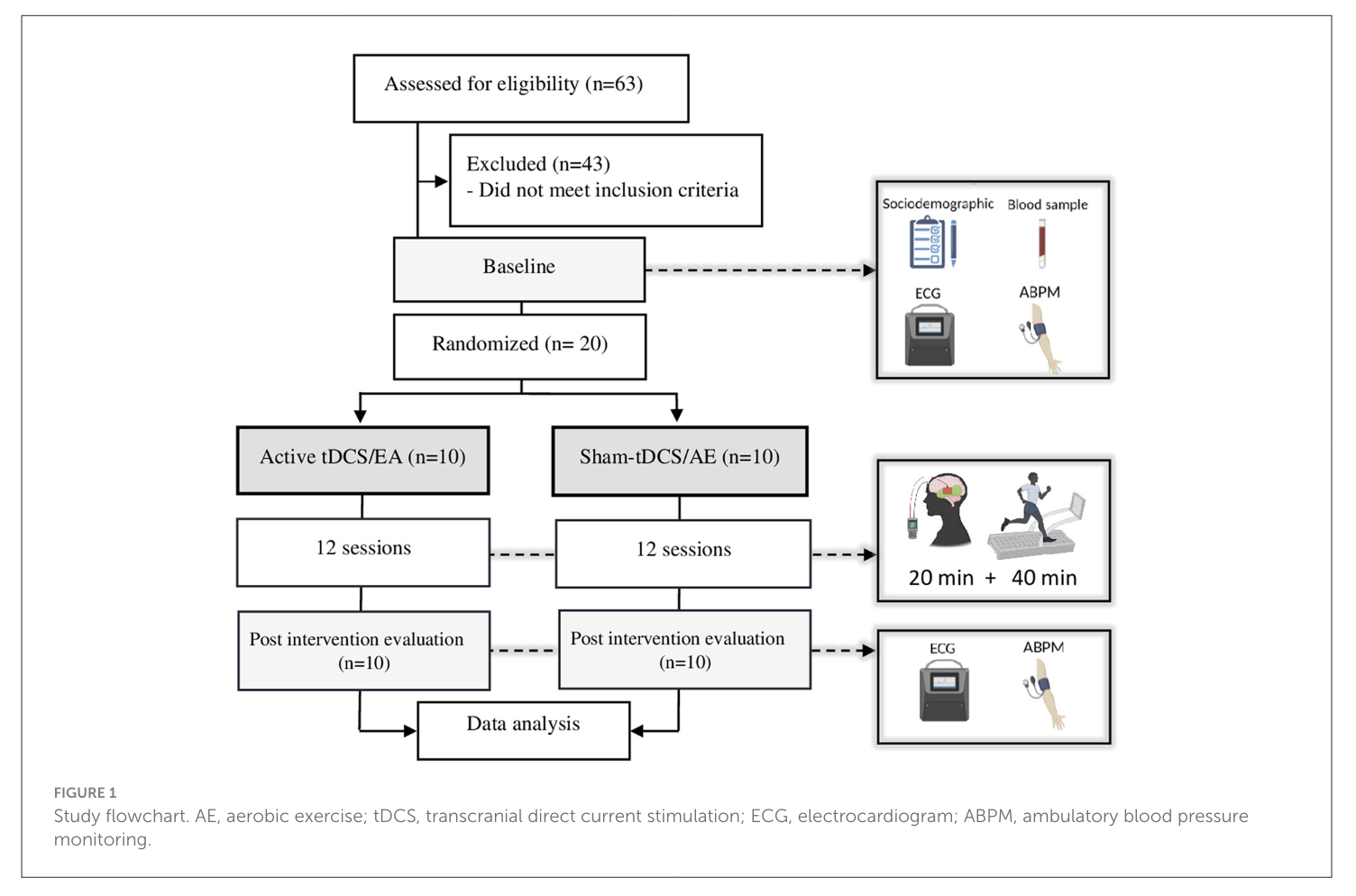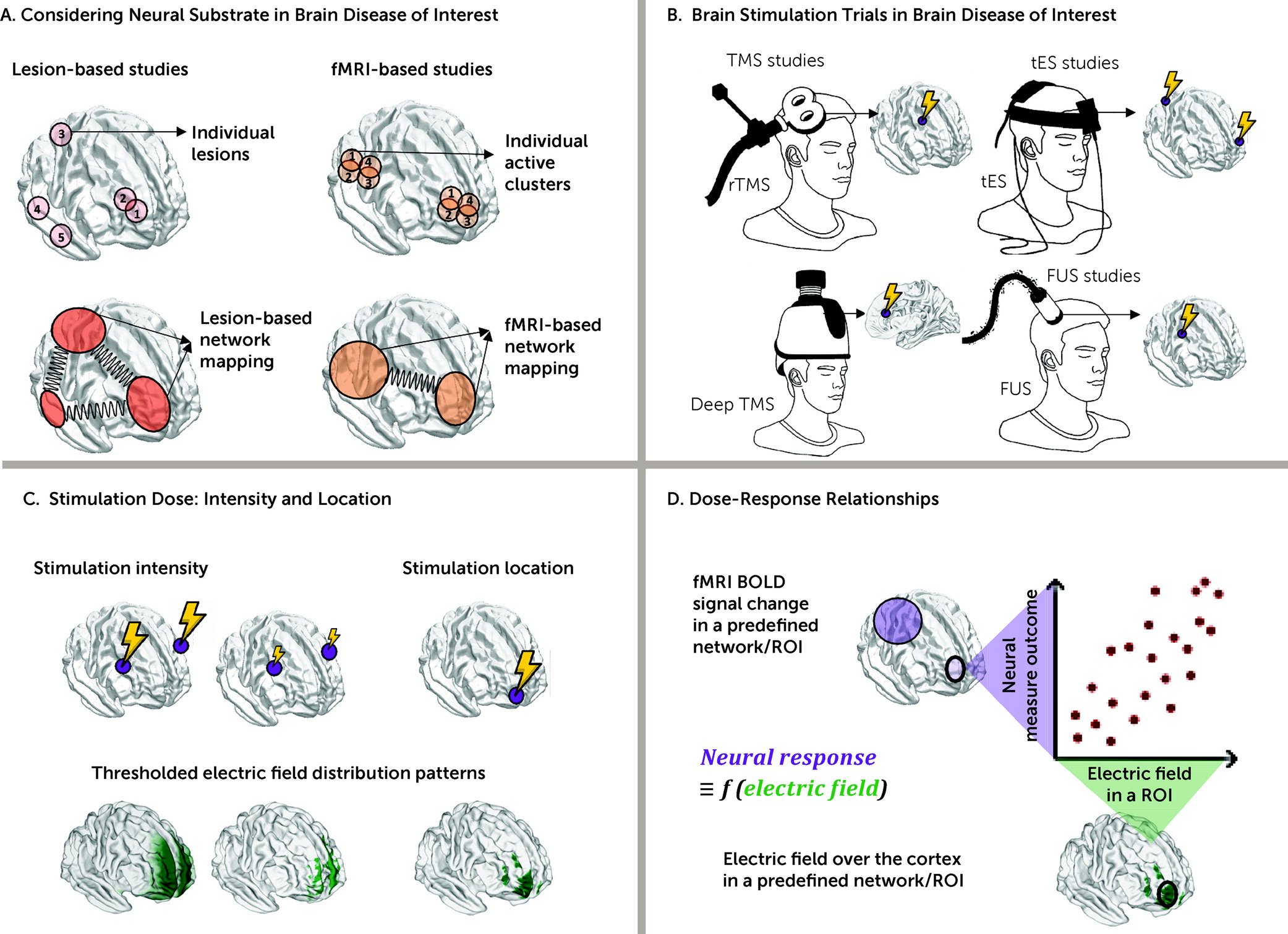Quasistatic approximation in neuromodulation.
Wang B, Peterchev AV, Gaugain G, Ilmoniemi RJ, Grill WM, Bikson M, Nikolayev D.
J Neural Eng. 2024 Jul 24;21(4). doi: 10.1088/1741-2552/ad625e. PMID: 38994790
Quasistatic approximation in neuromodulation.
Wang B, Peterchev AV, Gaugain G, Ilmoniemi RJ, Grill WM, Bikson M, Nikolayev D.
J Neural Eng. 2024 Jul 24;21(4). doi: 10.1088/1741-2552/ad625e. PMID: 38994790

New publication:
Muccio M, Pilloni G, Walton Masters L, He P, Krupp L, Datta A, Bikson M, Charvet L and Ge Y (2024) Simultaneous and cumulative effects of tDCS on cerebral metabolic rate of oxygen in multiple sclerosis. Front. Hum. Neurosci. 18:1418647. doi: 10.3389/fnhum.2024.1418647
Abstract:
Introduction: Transcranial direct current stimulation (tDCS) is a non-invasive neuromodulation technique with simultaneous (during stimulation) and cumulative effects (after repeated sessions) on blood flow and neuronal metabolism. These effects remain mostly unclear especially in multiple sclerosis (MS). This work aims to elucidate brain metabolic and hemodynamic underpinnings of tDCS and its potential therapeutic impact in MS patients using quantitative tDCS-MRI.
Methods: MS participants (n = 20; age = 45.4 ± 12.3 years, 7 males) underwent 3 T MRI scans before and after 20 daily sessions of dorsolateral prefrontal cortex (DLFPC) tDCS (2.0 mA, left anodal) paired with adaptive cognitive training (aCT). During both visits, imaging measurements of cerebral blood flow (CBF), cerebral venous blood oxygenation (Yv) and calculated cerebral metabolic rate of oxygen (CMRO2) were obtained at pre-tDCS, during-tDCS and post-tDCS.
Results: At baseline, significant increase from pre- to during-tDCS was observed in CMRO2 (7.6%; p = 0.002), CBF (11.0%; p < 0.0001) and Yv (1.9%; p = 0.006). At follow up, we observed an increase in pre-tDCS CMRO2 (140.59 ± 13.83 μmol/100 g/min) compared to baseline pre-tDCS levels (128.30 ± 14.00 μmol/100 g/min; p = 0.006). Sustained elevations in CMRO2 and CBF into post-tDCS were also observed (tDCS lingering effects). Cumulative tDCS effects were observed in the form of sustained elevations in CMRO2 and CBF in pre-tDCS follow up, reaching the magnitudes measured at baseline during-tDCS.
Discussion: TDCS induces an acute surge in metabolic activity persisting immediately after the stimulation is removed. Moreover, treatment composed of repeated tDCS-aCT paired sessions contributes to establishing long-lasting increases in neuronal activity.

New publication:
Frontal HD-tACS Enhances Behavioral and EEG Biomarkers of Vigilance in Continuous Attention Task
Nigel Gebodh, Vladimir Miskovic, Sarah Laszlo, Abhishek Datta, Marom Bikson
Brain Stimulation journal, 2024 DOI:https://doi.org/10.1016/j.brs.2024.05.009

The Bikson lab presents at the International Neuromodulation Society (INS), in Vancouver, Canada. May 11-15, 2024
“Do we need to understand mechanisms to invent the next breakthrough?” Marom Bikson, May 11 in the Innovation in Neuromodulation precon. Slides PDF
“Neurovascular Modulation: Is the Direct Stimulation of Brain Vasculature a Therapeutic Mechanism”, Marom Bikson, May 12, in the Noninvasive Brain Stimulaion) precon. Slides PDF.
“A New Disposable Electotherapy Platform”, Mohamad FallaRad, May 12, in the Noninvasive Brain Stimulaion) precon.
“Sub-Threshold Neuromodulation: Everything Old is New”. Marom Bikson, PLENARY, May 15. Slides PDF

New publication:
Front Neuroergon . 2024 Apr 10:5:1236486. doi: 10.3389/fnrgo.2024.1236486.
Edson Silva-Filho 1 2, Marom Bikson 3, Nigel Gebodh 3, Niranjan Khadka 3, Amilton da Cruz Santos 1, Rodrigo Pegado 2, Maria do Socorro Brasileiro-Santos 1
1 Associated Postgraduate Program in Physical Education, Federal University of Paraíba, João Pessoa, Paraíba, Brazil.
2 Postgraduate Program in Physiotherapy and Postgraduate Program in Health Science, Federal University of Rio Grande do Norte, Santa Cruz, Brazil.
3 Department of Biomedical Engineering, The City College of The City University of New York, New York, NY, United States.
PMID: 38660589 PMCID: PMC11040684

Marom Bikson lectues at NJIT on April 19. 2024 on “Design of non-invasive electrical brain stimulation”
Slides PDF

Marom Bikson speaks at the ANT Neuromeeting April 10-11, 2024 in Philadelphia, PA.
Dr. Bikson speaks on Biomarkers for Design. Slides PDF

In Neuromodulation Technology and the Neural Interface. “A Brief History of Slow Spinal Potentials, Gate Theory of Pain, and Spinal Cord Stimulation”
Marom Bikson PhD, Mahima Sharma PhD

Antônio Felipe Lopes Cavalcante, Joanna Sacha Cunha Brito Holanda, João Octávio Sales Passos, Joyce Maria Pereira de Oliveira, Edgard Morya, Alexandre H. Okano, Marom Bikson, Rodrigo Pegado,
Anodal tDCS over the motor cortex improves pain but not physical function in chronic chikungunya arthritis: Randomized controlled trial.
Annals of Physical and Rehabilitation Medicine,, Volume 67, Issue 4, 2024, 101826, ISSN 1877-0657,
https://doi.org/10.1016/j.rehab.2024.101826.

The Bikson lab will be at the 2024 North American Neuromodulation Society (NANS) meeting on Jan 18-21, 2024.
Dr. Bikson is co-chairing the pre-meeting course “Engineering Principles of Deep Brain and Spinal Cord Stimulation” Jan 17, 8 AM- 5 PM. Dr. Bikson will give a lecture in the course on “Subthreshold Mechanisms of Brain and Spinal Cord Stimulation” at 10:20. Lecture slides: PDF
Mohamad Fallahrad will speak on “Highly Deployable and Wearable Non-invasive Electrical Stimulation” on Jan 20, 11:18 AM.
G. Soleimani, J. Joutsa, K. Moussawi, S.H. Siddiqi, R. Kuplicki, M. Bikson, M.P. Paulus, M.D. Fox, C.A. Hanlon, H. Ekhtiari. (2023) Converging Evidence for Frontopolar Cortex as a Target for Neuromodulation in Addiction Treatment. American Journal of Psychiatry. https://doi.org/10.1176/appi.ajp.20221022

Oct 18, 2023, Prof. Marom Bikson gives (via zoom) the Louisiana State University at Baton Rouge psychiatry grand rounds on ““A simple introduction to how neuromodulation devices work.”
Download slides PDF

Prof. Marom Bikson explains, with minimal technical language, How Neuromodulation For Pain Works.
Download SLIDES pdf
The lecture answers: What is "dose" in neuromodulation? How do neuromodulation devices control dose / what are "dose instructions"? When therapies work, what is it that is proven to work? What is the role of mechanisms in the invention of neuromodulation therapies?
What is the special role of the Gate Control Theory of Pain (by Melzack and Wall) and how did it drive modern neuromodulation for pain?
What is Transcutaneous Electrical Nerve Stimulation (TENS)? What is Peripheral Nerve Stimulation (PNS)? What is Spinal Cord Stimulation (SCS)? Dorsal Root Ganglion Stimulation (DRGs)? What are Evoked Compound Action Potentials (eCAPS)? What are Evoked Synaptic Activity Potentials (eSAPS)?
The lecture uses pain as the example but the broader concepts apply to all forms of neuromodulation / brain-stimulation.
Links to the cited works.
1. Fundamentals of Transcranial Electric and Magnetic Stimulation Dose: Definition, Selection, and Reporting Practices: https://www.ncbi.nlm.nih.gov/pmc/articles/PMC3346863/
2. Pain Mechanisms : A New Theory https://www.science.org/doi/10.1126/science.150.3699.971
3. Novel Evoked Synaptic Activity Potentials (ESAPs) Elicited by Spinal Cord Stimulation: https://www.eneuro.org/content/10/5/ENEURO.0429-22.2023.long
Citation: Bremner JD, Gazi AH, Lambert TP, Nawar A, Harrison AB, et al. Noninvasive Vagal Nerve Stimulation for Opioid Use Disorder. Ann Depress Anxiety. 2023; 10(1): 1117. PDF
Noninvasive Vagal Nerve Stimulation for Opioid Use Disorder
J Douglas Bremner, MD1,2,3; Asim H Gazi, BS4; Tamara P Lambert, MPH, MEng5; Afra Nawar, BS4; Anna B Harrison, MS4; Justine W Welsh, MD1; Viola Vaccarino, MD, PhD6,7; Kevin M Walton, PhD8; Nora Jaquemet, BS1; Kellen Mermin-Bunnell, BS1; Hewitt Mesfin, BS1; Trinity A Gray, BS1; Keyatta Ross, BS1; Georgia Saks BS5; Nikolina Tomic, MS4; Danner Affadzi, BS1; Marom Bikson, PhD9; Amit J Shah, MD, MSCR3,6,7; Kelly E Dunn, PhD10; Nicholas A Giordano, PhD, RN11; Omer T Inan, PhD4,5
1 Department of Psychiatry & Behavioral Sciences, Emory University School of Medicine, Atlanta GA
2 Department of Radiology and Imaging Sciences, Emory University School of Medicine, Atlanta GA
3 Atlanta Veterans Affairs Healthcare System, Decatur GA 4School of Electrical and Computer Engineering, Georgia Institute of Technology, Atlanta, GA
5 Coulter Department of Biomedical Engineering, Georgia Institute of Technology, Atlanta, GA
6 Department of Epidemiology, Rollins School of Public Health, Emory University, Atlanta, GA
7 Department of Medicine, Division of Cardiology, Emory University School of Medicine, Atlanta GA
8 Clinical Research Grants Branch, Division of Therapeu- tics and Medical Consequences, National Institute on Drug Abuse, Bethesda, MD
9 Department of Biomedical Engineering, The City College of New York, New York, NY
10 Department of Psychiatry and Behavioral Sciences, Johns Hopkins University School of Medicine, Baltimore MD
11 Nell Hodgson Woodruff School of Nursing, Emory Uni- versity, Atlanta, GA
Abstract
Background: Opioid Use Disorder (OUD) is an escalating public health problem with over 100,000 drug overdose-related deaths last year most of them related to opioid overdose, yet treatment options remain limited. Non-invasive Vagal Nerve Stimulation (nVNS) can be delivered via the ear or the neck and is a non-medi- cation alternative to treatment of opioid withdrawal and OUD with potentially widespread applications.
Methods: This paper reviews the neurobiology of opioid with- drawal and OUD and the emerging literature of nVNS for the ap- plication of OUD. Literature databases for Pubmed, Psychinfo, and Medline were queried for these topics for 1982-present.
Results: Opioid withdrawal in the context of OUD is associated with activation of peripheral sympathetic and inflammatory sys- tems as well as alterations in central brain regions including ante- rior cingulate, basal ganglia, and amygdala. NVNS has the potential to reduce sympathetic and inflammatory activation and counter the effects of opioid withdrawal in initial pilot studies. Preliminary studies show that it is potentially effective at acting through sym- pathetic pathways to reduce the effects of opioid withdrawal, in addition to reducing pain and distress.
Conclusions: NVNS shows promise as a non-medication ap- proach to OUD, both in terms of its known effect on neurobiology as well as pilot data showing a reduction in withdrawal symptoms as well as physiological manifestations of opioid withdrawal.

Giuseppina Pilloni, Hyein Cho, Tian Esme Tian, Joerg Beringer, Marom Bikson, Leigh Charvet. (2023) . Immediate and Differential Response to Emotional Stimuli Associated With Transcranial Direct Current Stimulation for Depression: A Visual-Search Task Pilot Study.
Neuromodulation. https://doi.org/10.1016/j.neurom.2023.07.006 in press

Carine El Jamal, Ashley Harrie, Annalise Rahman-Filipiak, Alexandru D Iordan, Alexandre F DaSilva, Robert Ploutz-Snyder, Lara Khadr, Michael Vesia, Marom Bikson, Benjamin M Hampstead. (2023)
Tolerability and blinding of high-definition transcranial direct current stimulation among older adults at intensities of up to 4 mA per electrode.
Brain Stimulation. https://doi.org/10.1016/j.brs.2023.08.025 in press
Marom Bikson organizes the Neuromodulation The Science (NTS) component of the 30th Napa Pain Conference, in Napa, California, on August 18-19, 2023. Program and details.
Dr. Bikson will lecture on “How Neuromodulation for Pain Works.” . Download talk slides
